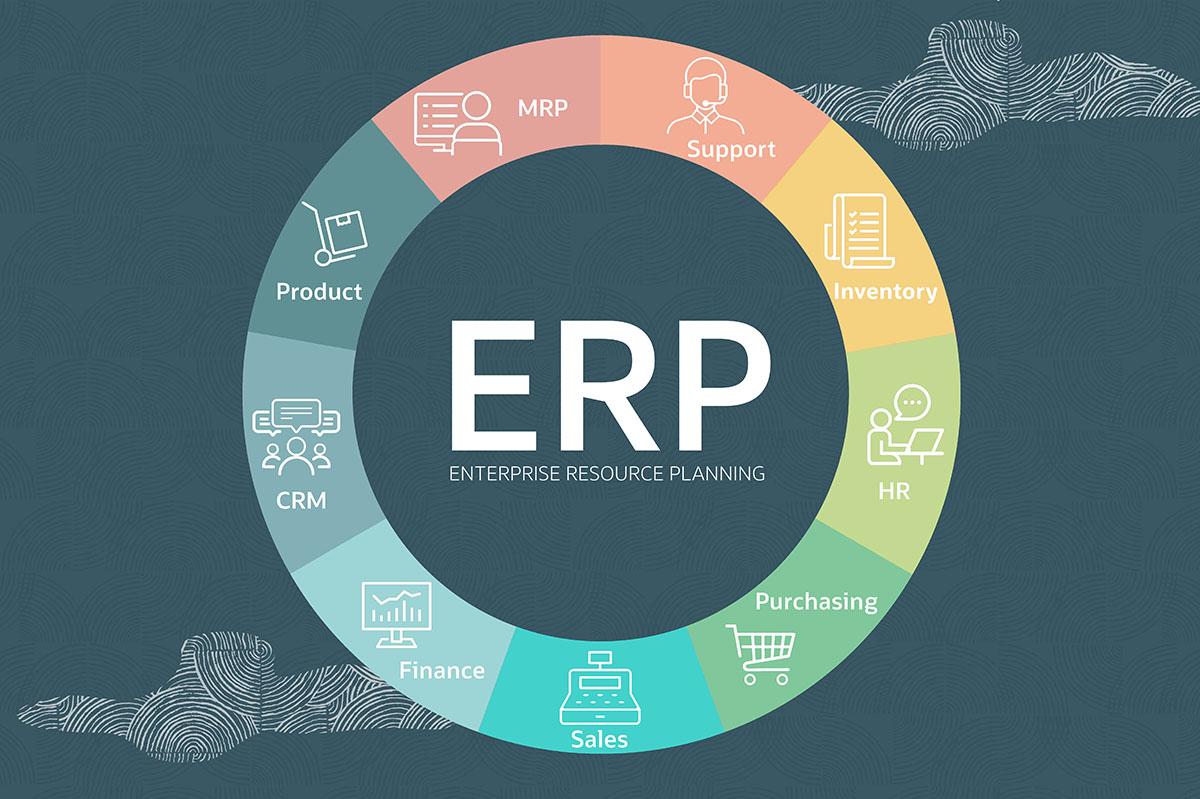Today’s ERP solutions have rich feature sets that bring countless benefits to businesses. While what an individual firm sees as the greatest value of this technology will vary, here are key universal advantages ERP delivers:
1. Cost savings: Perhaps the biggest value proposition of ERP systems is they can save your organization money in a number of ways. By automating many simple, repetitive tasks, you minimize errors and the need to add employees at the same rate as business growth. Cross-company visibility makes it easier to spot inefficiencies that drive up costs and leads to better deployment of all resources, from labor to inventory to equipment. And with cloud ERP, companies may quickly see incremental value from the software, over and above what they’re spending.
2. Workflow visibility: With all workflows and information in one place, employees with access to the system can see the status of projects and the performance of different business functions relevant to their jobs. This visibility may be particularly valuable to managers and leaders, and it’s far faster and easier than searching for the right documents and constantly asking colleagues for updates.
3. Reporting/analytics: Data is useful only if companies can analyze and understand it, and an ERP helps with that. Leading solutions have impressive reporting and analytics tools that allow users to not only track KPIs, but display any metrics or comparisons they can dream up. Since an ERP is all-encompassing, it can help a business understand how a change or problem with a process in one department affects the rest of the company.
4. Business insights/intelligence: Because ERPs can access data from across the company, these systems can uncover impactful trends and provide extensive business insights. This leads to better decision-making by organizational leaders who now have easy access to all relevant data.
5. Regulatory compliance & data security: Financial reporting standards and governmental and industry-specific data security regulations change frequently, and an ERP can help your company stay safe and compliant. An ERP provides an audit trail by tracking the lifecycle of each transaction, including adherence to required approval workflows. Businesses may also reduce the chance of errors and related compliance snafus with automation. ERP software provides financial reports that comply with standards and regulations, and SaaS applications are well-equipped to help companies with PCI-DSS compliance.
6. Risk management: ERP technology reduces risk in a few ways. Granular access control and defined approval workflows can strengthen financial controls and reduce fraud. Additionally, more-accurate data heads off mistakes that could lead to lost sales or fines. And finally, the ability to see the status of the entire operation enables employees to quickly handle risks posed by business disruptions.
7. Data security: ERP providers understand that your system houses critical, sensitive data and take necessary steps to ensure it is secure. This diligence is more important than ever as the volume and scale of cyberattacks increase. Cloud ERP software, in particular, uses cutting-edge security protocols to ensure your company doesn’t fall victim to a damaging attack.
8. Collaboration: Employees are most effective when they work together. ERP solutions make it easy to share information—like purchase orders, contracts and customer-support records—among teams. It knocks down walls between departments by giving employees appropriate access to data on related business functions.
9. Scalability: The right ERP system will be scalable and flexible enough to meet your company’s needs today and for the foreseeable future. Cloud systems in particular adapt to minor and major operational changes even as the amount of data the organization captures and demand for access increase.
10. Flexibility: While ERP software helps businesses follow best practices, it also offers the flexibility to support unique processes and objectives. The system gives administrators the ability to build out company-specific workflows and create automatic reports important to different departments and executives. An ERP enhances your organization’s innovation and creativity.
11. Customization: While most companies find that modern ERPs support their businesses “out of the box,” some firms need to add to the extensive built-in functionality. If you have a lot of specialized processes, look for an extensible system that allows your integrator or IT staff to write code that adds needed features, or that can integrate with homegrown or legacy solutions. However, before going the custom route, take a close look at your processes—the prebuilt functionality and configurations modern ERP solutions support are based on best practices gathered from thousands of companies. Aim to minimize customizations.
12. Customer & partner management: An ERP can strengthen a company’s partner and customer relationships. It can provide insights on suppliers, shipping carriers and service providers, with the cloud enabling even better, more convenient information exchange. When it comes to customers, the solution can track survey responses, support tickets, returns and more so the organization can keep its finger on the pulse of customer satisfaction.
6 Disadvantages of ERP Systems
Despite all the value ERP brings, there are challenges businesses may encounter. Many of these can be avoided by preparation and choosing the right supplier partner.
1. System cost: Because they were expensive to purchase, implement and maintain, early ERP systems were accessible only to large companies. However, that hasn’t been the case for two-plus decades. While ERPs still require a time and financial investment, the technology has become much more affordable thanks to both SaaS systems that charge a recurring fee and more solutions designed for small and midsize businesses entering the market. Organizations can use tools to calculate estimated savings after one and three years, for instance, to find out when returns will surpass costs.
2. Need for training: Like any new tech, ERP has a learning curve. Anyone who will use the software—that is, ideally, most or all of your employees—requires some level of training. Although there may be resistance at first, that should fade away as people realize how much the technology will help them. Newer systems that receive frequent updates are more intuitive and user-friendly, reducing training requirements and increasing adoption.
3. Data conversion costs: When moving to a new ERP, you may need to convert some data into a format that’s compatible with the new platform. This can lead to unexpected costs and delays, so review your databases, and work with your IT team or an integration partner to identify potential data compatibility issues early on. Then, you can factor conversion efforts into the ERP implementation plan.
4. Complexity: An ERP system is loaded with features, and that can be daunting to your workforce. But the software available today is far easier to use than legacy systems because vendors have focused on improving the user experience. Additionally, employees need access to only the modules and dashboards required for their jobs, which can make it more approachable. Thorough training should temper concerns about complexity.
5. Maintenance: In the past, maintenance was a large expense that deterred lower-revenue businesses from adopting ERP. Not only did a company need an IT staff to handle patches, security and required system upgrades, it often had to pay the vendor or a third-party service provider for its expertise. This is less of a concern with a SaaS system because the provider takes care of all maintenance and regularly moves all customers to the latest version—and it’s all built into the subscription price. Companies concerned about maintenance should thoroughly vet a potential supplier to ensure it offers a true vendor-managed SaaS system.
6. Doesn’t solve process and policy issues: If you have error-prone or inefficient processes, an ERP won’t necessarily fix them, even though it may increase accuracy. It can, however, uncover problems in your operations and help you brainstorm better ways to do business. The same goes for policies that hold the organization back—it’s up to you to adjust those and then configure the system to support better ways of doing business.


